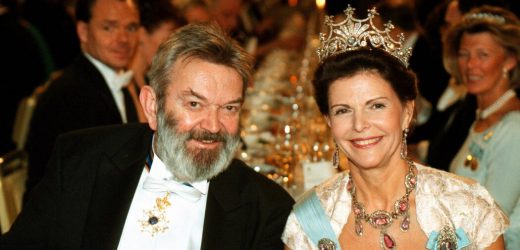Martinus J.G. Veltman, a Dutch theoretical physicist who was awarded the Nobel Prize for work that explained the structure of some of the fundamental forces in the universe, helping to lay the groundwork for the development of the Standard Model, the backbone of quantum physics, died on Jan. 4 in Bilthoven, the Netherlands. He was 89.
His death was announced by the National Institute for Subatomic Physics in the Netherlands. No cause was given.
There are four known fundamental forces in the universe: gravity, electromagnetism, the strong force that bonds subatomic particles together, and the weak force that is responsible for particle decay. Since the discovery of the last two forces in the first half of the 20th century, physicists have looked for a unified theory that could account for the existence of all four.
In the early 1960s, Dr. Sheldon Lee Glashow, Dr. Steven Weinberg and Dr. Abdus Salam developed a theory, called the electroweak theory, that found a unity between electromagnetism and the weak force. But the complex math behind the theory ran into problems because it sometimes produced infinite answers, such as for the energy of a particle. That was obviously impossible and therefore meaningless.
The calculations were also complex because they were based on “non-Abelian gauge theory” in which a change in the sequence of operations performed on an equation to change its form also changes its result. (So, unlike in high school mathematics, in which a x b equals b x a, in non-Abelian gauge theory, sometimes a x b does not equal b x a.
Working with a graduate student of his, Gerardus ’t Hooft, Dr. Veltman set out to solve the problem. They used a technique called renormalization, which allowed them to substitute experimental results for the calculations that resulted in infinity.
To perform the calculations, Dr. Veltman and Dr. 't Hooft used a computer program that Dr. Veltman had written called Schoonschip, which is Dutch for “to clean or clear things up.” Dr. Veltman would later joke that he chose the name partly to annoy people who could not speak Dutch.
Dr. Veltman and Dr. ’t Hooft were successful at solving the theoretical problems with the electro-weak theory, firmly establishing that the forces are, in fact, a manifestation of the same force at high energy levels. Their work supported the prediction that two previously unknown fundamental particles, the W and Z bosons, would be found, helping to fill out missing elements of the Standard Model.
Dr. Glashow, Dr. Weinberg and Dr. Salam were awarded the Nobel Prize in 1979 for developing the electro-weak theory and Dr. Veltman and Dr. ’t Hooft shared the prize in 1999 for their contribution.
Dr. Glashow said that Dr. Veltman’s and Dr. ’t Hooft’s work was invaluable. “Without the calculational system they developed, no one would have taken the electro-weak theory seriously,” he said.
Martinus Justinus Godefriedus Veltman was born on June 27, 1931, in Waalwijk, Netherlands. He was the fourth of six children. His father was the head of a primary school; one of Martinus’s brothers and two of his sisters became primary schoolteachers.
Waalwijk was occupied by the Germans in 1940 and troops took over Martinus’s father’s school. Though the town was liberated in 1944, the north of the Netherlands continued to be occupied, and Waalwijk was located close to the front line. In his Nobel biography, Dr. Martinus recalled that V-1 bombs fell on the town, with one landing on a house only 100 yards from his own, killing its inhabitants.
Dr. Veltman was a so-so student, barely passing his final high school exam, but a high school teacher thought that he showed promise and urged his parents to send him to a university. He attended the University of Utrecht, commuting 90 minutes each way.
Dr. Veltman found the education at the university, which had lost many of its best professors during the war, uninspiring. He was also poor and worked on the side to raise enough money to make it through college. It took him five years to finish his degree, two more than usual. But then he stumbled on a book about Einstein’s theory of relativity and became fascinated by physics. He decided to pursue a Ph.D. at Utrecht.
At around the same time, the Belgian physicist Léon Van Hove arrived at the university and became Dr. Veltman’s adviser. After a two-year military stint, Dr. Veltman completed his doctorate.
Dr. Van Hove left Utrecht in 1960 to become director of the theory division at CERN, the European Organization for Nuclear Research, in Geneva. Dr. Veltman followed him a year later.
Dr. Veltman spent a year at the SLAC National Accelerator Laboratory at Stanford University in 1963 before returning to CERN. He worked at the Brookhaven National Laboratory in New York in 1966 and was then hired by his alma mater, filling the post at the University of Utrecht that Dr. Van Hove had occupied.
In 1979, he received an invitation to teach for a year at the University of Michigan, Ann Arbor. At the end of the appointment, he was hired to fill the John T. and Catherine T. MacArthur chair at the university. He stayed until his retirement in 1996, when he and his wife returned to the Netherlands.
In 2003, he published a book about physics for the lay person called “Facts and Mysteries in Elementary Particle Physics.”
He is survived by his wife, Anneke, and their three children, Hélène, Hugo and Martijn.
Dr. Veltman had an easygoing approach to physics. His Nobel lecture stepped through the elements and history of particle physics using simple words and humor. Indeed, his humor was often sly. During a question-and-answer session after a lecture at the Lindau Nobel Laureate Meetings in 2019, he was asked what made him like a theory.
“The answer is trivial,” he said. “It has to work.”
Source: Read Full Article



